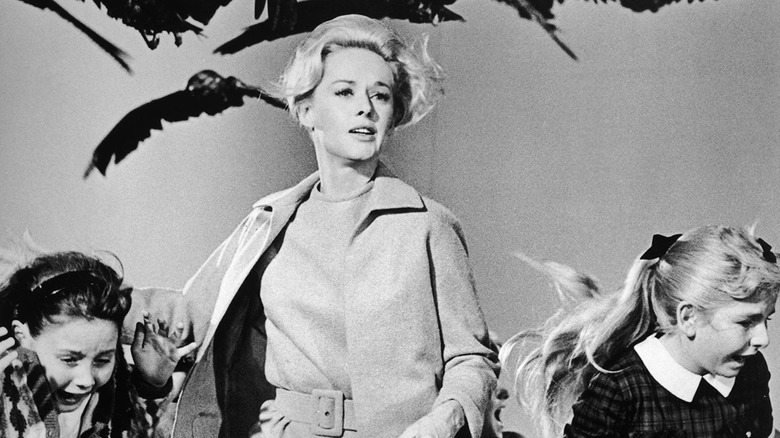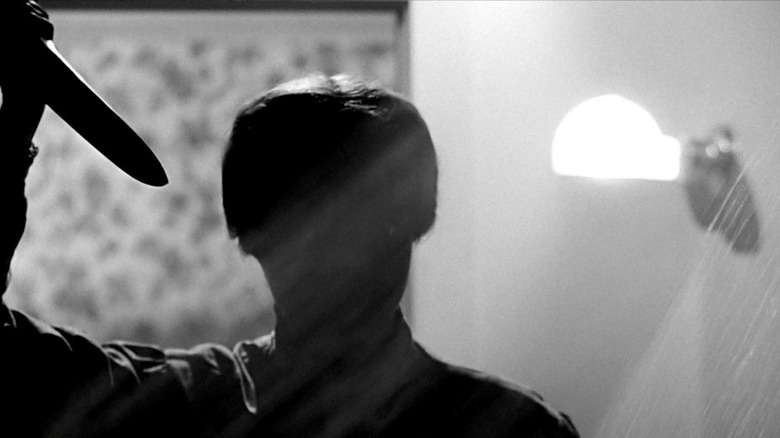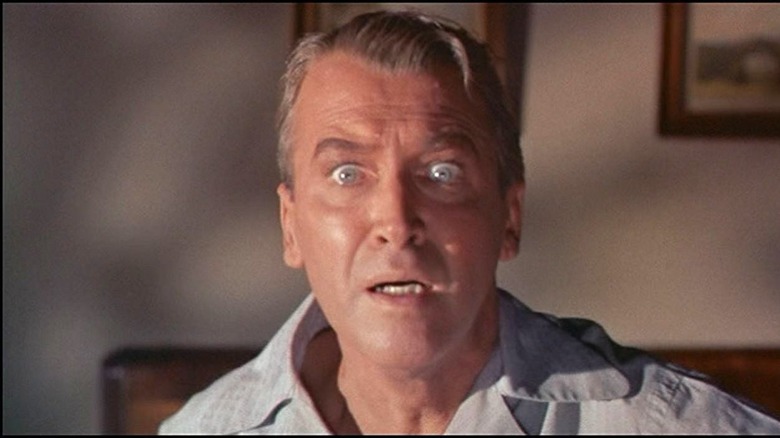Alfred Hitchcock's Expert Tip For Making Horror Scenes More Terrifying
The auteur theory in cinema is the belief that the director is the singular "author" of a film. Perhaps no filmmaker is more representative of the auteur theory than the Master of Suspense, Alfred Hitchcock. The British-born director moved to Hollywood in 1939 and immediately made his mark — his first American film, "Rebecca," won the Academy Award for Best Picture.
Known for suspenseful thrillers such as "The Birds" and "Vertigo," Hitchcock's artistic vision broke conventional rules while creating a new filmmaking style. In fact, he would go out of his way to avoid copying other films. Hitchcock once told American Cinematographer that he spent half of his time on set avoiding film clichés, maintaining that mood isn't dictated by the lighting of a scene but rather the apprehension emanating from the scene.
Before he died in 1980, the Master of Suspense revealed the technique behind a specific scene from one of his movies that made an entire generation afraid to shower while alone in the house and changed Hollywood forever.
The scene that changed Hollywood horror
In 1960, Alfred Hitchcock released the psychological thriller "Psycho." The movie featured a murder in a shower that would become one of the most famous scenes in cinema history. The scene is a lesson in suspense, using stylistic editing and a cacophony of violins, violas, and cellos. Years later, on a 1972 episode of "The Dick Cavett Show," Hitchcock would discuss what made the shower scene so terrifying. He explained that close-up shots and rapid edits made the scene scarier than any wide shot or showing actual blood:
"It was just this fast cutting from one thing to another, the knife coming at the camera and so fourth ... the cutting of the knife, the girl's face and the feet and everything was so rapid that there was 78 separate pieces of film in 45 seconds."
During the interview with Cavett, Hitchcock also revealed a fact about "Psycho" that might surprise people. He noted that the props department built a "lovely torso" made of pink rubber with tubes filled with fake blood inside. The torso ended up unused because when filming the scene, the knife never touched the body at all.
The History Channel rightfully calls the scene a "demarcation line" in cinema history, noting that the film opened the floodgates to a new kind of Hollywood monster. Not the ones that look like Godzilla or aliens but rather the monsters that live inside of us.
This is not what people signed up for
The irony of the "Psycho" shower scene is that the Master of Suspense got us with surprise, rather than his trademark suspense. In the scene, Marion Crane (Janet Leigh) is brutally murdered midway through the movie, something audiences never saw coming. In an analysis of the scene, the NY Post deduced, "Hitchcock is removing his protagonist 40 minutes into the film, which at the time was completely novel. This is a different kind of cinema; this is not what people signed up for."
Alfred Hitchcock's film career spanned more than six decades, dating back to the silent film era. He developed a voyeuristic style of filmmaking that utilized lighting and camera angles, placement, and movement to favor suspense over surprise. The psychological style would eventually become known as "Hitchcockian" and used by filmmakers such as Brian De Palma and Dario Argento. The style is possibly most evident during the opening minute of Hitchcock's 1958 film "Vertigo."
Hitchcock directed more than 50 feature films and received the American Film Institute's Life Achievement Award in 1979. He remains one of the most influential filmmakers in all of cinema with a style that is often copied, rarely duplicated, and to this day still makes a few of us think twice before getting into the shower.


